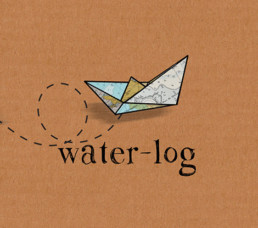We once left a taxi driver in St. Kitts dumbfounded when we explained that after getting out of his cab we’d be hopping into our dinghy to get to our yacht, lying at anchor.
“You got TWO boats?” was his astonished response, “You even got a boat to get to your boat?!?”
Far from the presumed luxury that he took a dinghy to be, all liveaboard cruisers rely heavily on their tenders. We prefer to anchor rather than sit in a marina so the dinghy is our lifeline to the shore. It’s essential for provisioning trips, it takes us out for snorkelling expeditions and we’ve even used it for collecting rainwater in tropical downpours. We often choose to row with the oars rather than use the outboard, as any quiet and less fuel hungry option is always our inclination.
Our current dinghy is the second one we’ve had. The first was once a noble inflatable chariot of a thing, bought second hand in the UK but, alas, is no more. It had survived countless inexperienced beach surf landings, meandering potters upriver, long adventures through mangrove jungle and a close shave with our enthusiastic, foolishly close experiments with paper fire lanterns at New Year’s Eve in Panama’s San Blas islands.
It even helped us perform a rescue mission one evening in the Caribbean when we were heading home to the boat and heard some yelps in the dark. We spotted two men in a tender, loaded down with luggage, no lights, calling us over to them. Their outboard had failed, the wind and waves had picked up and they were drifting out to sea in front of the high-speed ferry dock. We happily agreed to tow them but they were so laden down and our 3.3 horsepower outboard so pushed to the limit that it took us a good half hour to return them safely to their boat.
However, the breaking point for our beloved dinghy was the inescapable demise caused by years of tropical sun exposure. Upon leaving a marina in Mexico we observed that it had acquired more holes than a cheese grater – not a desirable feature in what should be an airtight vessel. To add to this the oars were a rather motley, mis-matched, half-broken set which left the whole thing looking rather sorry for itself.
Had it still been the two of us we probably would have just continued to patch, make do and mend it. But this turn of events had coincided with our first baby arriving, which left us toying with the advantages that an upgraded tender could bring. We were still pondering the decision when coming back to our freshly anchored boat and were confronted by the tail end of an offshore storm causing trouble in the bay. The system was directly to the West of us, meaning that there was nothing between the open sea kicked up by the storm and the shoreline except our anchorage.
Suffice to say that as we approached and saw our boat literally surfing breakers at anchor we decided that not only would these be the worst possible conditions for our first attempt at getting back on board with a new baby but that we should also plan to spend the night elsewhere. A rapidly deflating and sinking dinghy was definitely a contributing factor to that decision as we loitered hesitantly in front of our boat’s bouncing stern before resigning ourselves to the long limp back to the marina docks in our soggy rubber duck.
Dinghy number two was sold to us by another cruiser and seemed the height of luxury as it had a rigid bottom, something that gave us more confidence in it’s toughness given the crocodiles we’d seen in the waters of Central America and the sharp shell and stone beaches of the Pacific. In this second inflatable we visited the stingrays of Moorea, the pretty reefs of Fiji, and were circled by sharks in the Tuamotus. We even used it to slowly and gently follow behind a mother and calf humpback whale in the Vava’u group in Tonga.
But, perhaps unsurprisingly, like any family with young children, our family ‘car’ has suddenly transformed from exotic adventurer to becoming overrun with more domestic items belonging to them. Pfd’s, flip-flops, a hodgepodge of snorkel gear and sunscreen now litter its floor and any outing off the boat seems to involve a whirlwind of tangled limbs and lots of wriggling akin to trying to control a bag full of squirrels. And it can only get worse so most likely we’ll shortly be investigating the aquatic equivalent of a people carrier.
